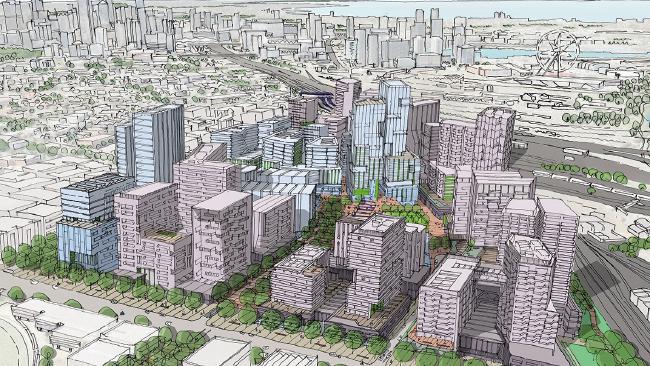Victorian Government Creates New Suburb on CBD's Edge
The Victorian government has rezoned industrial land north-west of Melbourne's CBD to build thousands of new homes in a bid to tackle housing affordability.
The rezoning will make way for 10,000 new residents in the newly-created suburb, Macaulay, with Planning Minister Richard Wynne announcing changes to the Melbourne Planning Scheme on Monday.
"We’re building a flagship new community, protecting local character, making homes more affordable and giving more Victorians a chance to work close to where they live," he said.
The suburb will benefit from close proximity to the future Arden urban renewal area and station, one of the five new underground stations being built as part of the Metro Tunnel.
[Related reading: Lendlease-Led Consortium Wins $6 Billion Melbourne Metro Tunnel Project]

The changes will unlock millions of dollars of investment for the new suburb, in a attempt to make homes more affordable and to create a new community within the inner-city limits.
[Related reading: Tenants Given More Rights Under Victorian Rental Reforms]Wynne has approved the City of Melbourne’s request for an interim development contributions plan overlay, ensuring landowners and developers who make a windfall from the development of Macaulay give back by helping build community services and infrastructure.
Developers and landowners will have to give the Victorian government more than $16,000 for every dwelling -- the interim contribution rates paid by developers and landowners are:
⦁ $16,127.58 per dwelling
⦁ $182.58 per square metre of new commercial floor area
⦁ $152.15 per square metre of new retail floor area.
The suburb will be home to 10,000 residents and 9,500 jobs by 2051. It will encourage a range of housing options, including more affordable dwellings for the community.
[Related reading: Victoria Releases Updated Apartment Design Guidelines]
New building controls will ensure high quality mid-rise developments between six and nine storeys, or rising to 12-storeys if public benefits such as community facilities or additional open space agreed by council are included. The controls provide certainty for the community and developers – and long-term flexibility.
The City of Melbourne has worked with the community to shape the vision and plan for the area and ensure that the amendment strikes the right balance between catering for population growth and protecting local character.














